

Since the dawn of time, human beings have asked themselves the same universal questions: what happens after death? Is there a divine justice that fixes the injustices of this world? Will bad people be punished and good people rewarded? This deep concern is present in all cultures and times.
The Christian tradition brings its own answer to these questions through the concept of the Last Judgement. According to this doctrine, at the end of time, all the dead will rise to stand before Christ. This is the moment when every soul will be finally judged according to its actions on earth, and its eternal destiny will be decided: heaven or hell.
To understand this concept, you need to distinguish two different moments in Christian theology. First, when a person dies, they go through an immediate personal judgement. Saints and martyrs go straight to heaven, while unrepentant sinners are condemned to hell. Most souls, however, spend some time in purgatory to pay for their faults.
But this is only the first step. The Last Judgement is the final event in human history: all bodies rise again, all souls appear together before Christ, and the verdict becomes final for eternity. This grand and dramatic scene is what the tarot card represents.
This idea of the Last Judgement deeply influenced the medieval Western imagination. It answered a basic need for justice: the idea that the suffering and unfairness of this life would finally be solved. For people of that time, often facing violence, poverty, and the power of the rich, this promise of a fair judgement brought great comfort.
Artists quickly took up this theme because it offered amazing visual possibilities: the resurrection of the dead, angels blowing trumpets, the separation of the chosen and the damned. Over the centuries, these images mixed the official Church doctrine with popular beliefs. For example, the archangel Michael weighing souls on scales is not in the Bible: this image appeared around 1100 in religious art before becoming a tradition.
This is exactly the dramatic and emotional scene that the first tarot creators chose to show in their decks. But as we will see, their vision of Judgement changed and evolved with the times, places, and artistic feelings, but always kept this universal meaning that still speaks to us today.
The words written in gold letters at the top of the Cary-Yale card (Visconti di Modrone) leave no doubt about the subject. Above the angels, the card says Surgite ad Judicium: "Rise for the Judgement". Angels with trumpets fill the top half of the card. Below, three naked humans come out of stone tombs.
Traditionally, the naked people are the resurrected souls, while the dressed people are angels (if they have wings) or saints (if they do not). The man wearing a robe could be Jesus, because he is the central figure in all Last Judgement paintings. Since the banner shows the heraldic symbols of the Visconti and Sforza families, it is possible that this deck was ordered by the Duke of Milan for the wedding of his daughter, Bianca Visconti, to the future Duke of Milan, Francesco Sforza.
The Visconti-Sforza deck card is unique because it shows God at the top center, with two angels with trumpets and banners beside him. The flag near the end of the trumpet held by the right angel shows a cross, the traditional symbol of Christ's resurrection. God holds a sword and an orb to show his power over the universe. Three people - a young man, a young woman, and an old bearded man - share the same tomb. This unusual feature appears in a few other decks.
In this card, from the deck known as Charles VI Trumps, seven lively souls are coming out of their graves. Four figures in the background show their joy, but three figures in the front have their arms crossed as if they are afraid of what is waiting for them.
The references to the Last Judgement in the Bible mention angels in the plural, without saying how many or their names. Most hand-painted decks from the 15th century show two angels, starting a tradition that will continue in later images.
The call to the Last Judgement would have been a terrifying experience for medieval Christians who were very aware of their sinful state. They knew very well that there was no guarantee of a good result when meeting archangel Michael. Some tarot cards show this fear.
These French cards from the middle of the 17th century, from the Anonymous Paris Tarot, might continue an older Italian tradition. Looking closely at the figures, I notice a fascinating ambiguity in their gestures: does this raised arm mean they are protecting themselves from something coming from the sky? My personal view is that it shows more a feeling of fear in front of the will of God, making a gesture of warning or protection.
This interpretation shows a deep psychological side: when facing the greatness of divine judgement, people would naturally feel both hope for salvation and fear of being condemned. The artists of that time managed to show this strong emotional tension in their images.
The cards shown above cover more than 200 years of artistic changes. Still, from the first versions of the card with Noblet (1650) or Vachier (1639), the main parts of the picture stay the same until today. The classic form of this card was set from the start, making a model that lasted for centuries.
In the Tarot of Marseille, the angel takes up more than half of the card. Instead of several lively people looking at the angel with fear or wonder, the Tarot of Marseille shows three people in still poses, and only one looks at the angel. The person in the middle, with their back to us, is blue or grey, the same color as the angel's cloud. Their haircut shows they are a member of the clergy. This middle figure is the only one really coming out of a tomb. The two skin-colored people on each side seem to be praying for a good result from the judgement.
This scene looks like pictures of the resurrection of Christ where he is shown coming out of his tomb. In the Tarot of Marseille card, the woman looks at the man with the special haircut, while the man on the right bows his head to look at the angel. There seems to be more happening here than just answering the angel's call. Some people say that where they look shows us that the woman turns to the Church for spiritual guidance, while the man goes straight to the source, the angel. The naked clergy member could be a way of saying that even the Church is judged, just like ordinary people. Showing the middle figure in the same color as the cloud could mean their spiritual nature.
The flag held by the angel is important. This red cross on a white background is the flag used by crusaders in battle, and it also appears in pictures of the risen Christ coming out of his tomb to show his victory over death. For those who have not read the article about the Sun card, this symbol makes the spiritual victory in this card even stronger.
Always him! Even on this card, Jean Noblet continues to bring a different view. This personal analysis needs a careful look at the symbols, because Noblet hides his messages in a very subtle way.
First point: the figures are stuck together
It is clear that Jean Noblet wanted to put the three figures close together: they touch each other, in fact, they are really one. The artist wanted to show that the three parts - male, female, and here child (not always Christ) - are really one. The soul or spirit (depending on how you see it) is united here. The three main parts of the mind (male, female, child) talk to each other, work together, live together: they are a real united family.
With other card makers, this detail is much less clear. You feel that they did not pay attention to this part of the image. At worst, in some decks, the figures do not touch; at best, in others, they just touch with their elbows.
Second point: the woman does not look at Christ
The woman does not look at Christ (or her child, depending on how you see it) but seems to look at the sky and the angel. We do not have the same contradiction or meaning I talked about above. Noblet is right: this makes the card less confusing, and we stay focused on what matters. Not on who we should follow or learn from, or "where is the truth?", but what is the teaching itself.
Third point: the angel is cross-eyed
This is amazing! People talk about the rebellious side of this tarot with the gesture of the Magician, but here I think this is the best! And yet, in the end, this detail is much less noticed than the other gesture. This look of the angel is like the lion on the World card who is also cross-eyed (we will talk about that in the article about that other card).
We should not see this as the angel having a problem with his eyes. It is not a mistake. We have to put this in context and try to think like Jean Noblet to understand what he wanted to say.
You should know that there are four angels: two earthly (Temperance and Devil) and two heavenly (Lovers and Judgement). The angel of Lovers, who is Cupid, has his eyes covered, while the angel of Judgement (the one I am talking about) is cross-eyed. Do you see? Here, Noblet clearly shows a change: first an angel (Lovers) who cannot see the truth, and here an angel who sees very well, and who is so focused on the truth that it is so close, right in front of his eyes, that he becomes cross-eyed.
You have to decode, right? This is a perfect example of how the master craftsman showed things in the 17th and 18th centuries. You have to be careful not to misunderstand or over-interpret these subtle symbols.
At the start of the 20th century, a big change happened in the way people saw the Judgement card. This change marks the move from a purely religious view to a more psychological and esoteric way of thinking.
French occultists like Éliphas Lévi and Papus had already started to change the image of the Tarot of Marseille to show a man, a woman, and a child coming out of their tombs, showing all human experience. This was different from the purely Christian tradition, and instead showed a more universal idea of spiritual rebirth.
Oswald Wirth, a major figure of this French school, showed this trio on his card and gave us the most complete occult meaning for this card. According to Wirth, the mother and the father face their son, who becomes the main character in the whole story of the major arcana. This central figure is not only in the Judgement card: he is also the Magician, the Chariot, the Hanged Man, and many other figures in the tarot.
This French interpretation gives a clear story to the tarot: the arcana tell the story of a soul growing and changing, and the Judgement card is one of the key moments in this spiritual journey.
When esoteric tarot reached Great Britain at the end of the 19th century through the Hermetic Order of the Golden Dawn, a new conceptual revolution happened. This secret society, which had famous members like William Butler Yeats and Aleister Crowley, completely reinterpreted the card as an inner process.
For the members of the Golden Dawn, Judgement is no longer an outside event imposed by a god, but a personal mystical experience. At this stage of spiritual life, the great work of transformation is complete. The person has passed through all the challenges shown by the other arcana and has reached a higher level of awareness.
The call to a new life does not come from an outside angel anymore, but from inside oneself, and the changed mind answers this call. The figures in this card become images of pure spirit rising joyfully to a new spiritual life.
This change in meaning had lasting effects. The Rider-Waite-Smith tarot set a new standard: Judgement became a card of personal rebirth, spiritual awakening, and psychological transformation. This idea still shapes most modern interpretations today.
I have to admit, this is the first time in the series of the major arcana, and so in the whole journey of the Fool, that I find myself with modern versions of the cards that do not fully convince me. I think this is because the symbolism of the card is clearly about the Last Judgement, which has very strong religious meaning. For modern creators, this symbol is mostly taken as a sign of rebirth, deliverance, and freedom... areas of meaning that I do not first connect to the Judgement card.
This tension shows a big issue for modern tarots: how do you translate medieval Christian symbols for a modern, often non-religious, audience? Today's creators make bold choices that are worth looking at.
The Light Seer Tarot card shows a young woman bathed in a ray of light. Her face is turned toward what could be the sun, her features look calm, her eyes are closed, and she holds her arms up to the sky in a strange way. Above her is an ethereal shape, like a ghost, showing herself flying upwards with open arms, as if she is rising. The meaning of freedom and spiritual rising is shown very clearly here.
Compared to earlier traditions, this way is a complete break. Where the Tarot of Marseille showed three people together answering the divine call, and the Rider-Waite-Smith still kept a group with its three family figures, the Light Seer makes the experience completely personal. Judgement becomes a private mystical moment, a personal rising that no longer needs any outside religious reference.
This vision fits very well with today’s spiritualities focused on personal growth and individual change. But it loses the dramatic and group feeling of the original judgement: there is no trumpet, no angel messenger, no group of resurrected people.
The Light Visions Tarot shows a door in the darkness of a starry night sky, open to the light shining in. Footprints start in the darkness, cross the doorway, and go away into the light. These prints seem to fade or float away. If the meaning of a path to the light looks clear, the prints that seem to fly add a real mystery to the image, making us think a man, a woman, or an invisible being is going out to the light, but maybe also coming in. It could make us think about disappearing into the light.
This card is even more abstract than the older traditions. It removes the human figure completely and keeps only the process of change. This is a very modern vision, close to Eastern philosophies about letting go of the ego and joining the absolute.
The Wake Me Up Tarot shows us an androgynous person - we do not know if it is a man or a woman - who shows their wrists and hands. Around their arms, there is a rope that is burning, showing that the person is about to be freed. They have big open eyes, even oversized, surely meaning some kind of revelation, enlightenment, vision. Behind the person, we see numbers, Polaroid photos, and a telephone receiver.
Maybe the photos are about how we look at ourselves or how others see us, which we should be careful about, but with judgement, we can say that the masks come off. The reason for the numbers is less clear. The numbers 2, 6, 8 (maybe also the infinity sign), 11... I am not sure how to understand these numbers. We also see a white feather, a sign of flying or rising up.
This modern version brings a very up-to-date idea: freedom from social conditioning. Everyday objects (phone, photos) show the illusions and material attachments we need to let go of. This is a very current meaning that connects to worries about social media, self-image, and being real.
Compared to the Rider-Waite-Smith where the family showed coming together and unity, this modern card shows a person alone with their own chains. Freedom is not for a group anymore but is very personal.
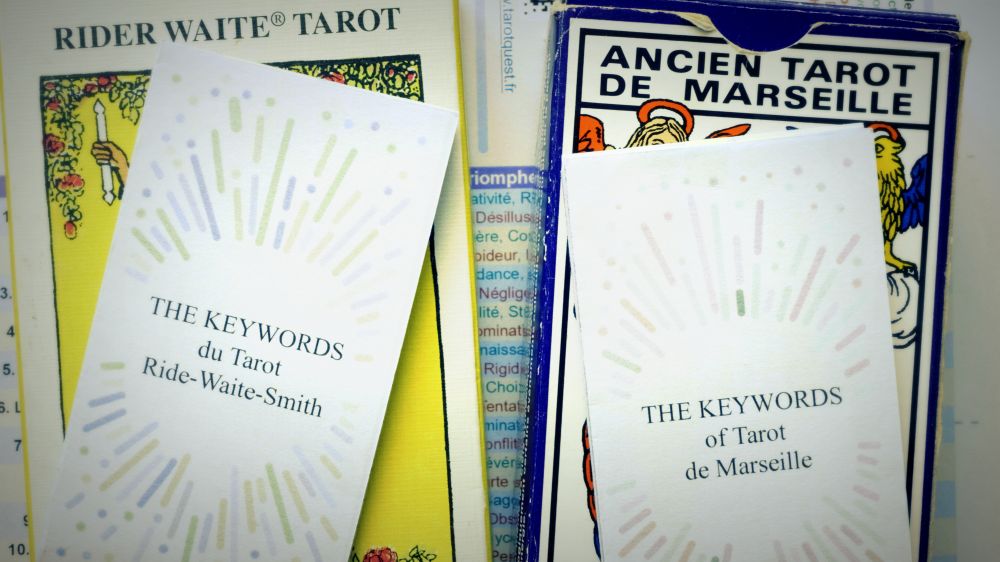
Key words for the 78 cards for the Tarot of Marseille and the Rider-Waite-Smith, to slip into your favorite deck. Your leaflets always with you, at hand, to guide you in your readings. Thanks to them, your interpretations gain in richness and subtlety.
The classic interpretation of Judgement gives us precious insight into the spiritual and transformative side of this card. But, after years of study and practice, I have developed an extra perspective that I think shows an even deeper side of this fascinating card.
Yes, I know, the card is called Judgement and it refers to the Last Judgement, but I really believe the French master craftsman wanted to say something different from the Italian card makers. This change in meaning deserves to be explored because it opens up new and rich ways to understand the card.
First, I would say this is the card where you learn not to judge! That means learning to welcome the light or the truth as it is, even if it can be blinding, unsettling, and suddenly show dark parts of ourselves. We must accept what the world brings and gives us. This is one of the important lessons of the card: true letting go.
This way of seeing the card changes our whole relationship with it. Instead of waiting anxiously for an outside verdict, like the old fear of divine judgement, we are invited to develop an attitude of unconditional acceptance. This way fits very well with modern spiritualities that focus on acceptance and not fighting against what is.
Let’s look closely at the Tarot of Marseille card: the angel blows the trumpet, but the man and woman both pray. Already, we are being told something, we pray for something to come (the Last Judgement) or for our own salvation. But salvation is not really freedom or release in the modern sense: it is more about moving to a happy and eternal life. Even if, yes, it is true, in a secondary way, it does free us from the pains and limits of this world.
Often, people talk about freedom and release with this card. These ideas, while important, are for me more side aspects of what the Judgement card really means. When you read the cards, do not go straight to these ideas, because even if they are attractive, they can hide the more subtle meanings.
We often talk about rebirth with Judgement, but we should not confuse it with Death. For example, a symbol like the phoenix should be with the Death card. The real word for Judgement would be more like “renewed birth” or a “second birth”, or even better: “spiritual birth”.
This difference is important because it stops us from mixing up destructive-creative change (Death) and spiritual awakening (Judgement). Rebirth means a death before, but spiritual birth is an awakening and discovery that can happen without destruction.
Let’s go back to what I said in the last article about the Sun card. Other master craftsman chose to put two children in the Sun card (or one child in the Rider-Waite-Smith), but for me, the card where the child should be is the Judgement card. Why?
The qualities of the inner child are: innocence, purity of heart, open mind, and being ready for anything. For me, these are “angelic” qualities by nature. They show the nature of the angel. This connects to cherubs, those angels shown as children in old pictures.
But Jean Noblet tells us on his card (as I said above) that now the female, male (Sun) and now the child (Judgement) are all one. The soul, or more exactly the mind of the person, is united. This means the person has solved their inner problems and accepted their inner tensions. Now, they understand and accept that there are different parts inside, and that is not bad, in fact it is good, because it helps us question ourselves, see things in new ways, and act differently in different situations. In short, it helps us move forward better.
This way of seeing Judgement as a card of psychic unification (more than a card of freedom) is very important for our time. Instead of trying to get rid of our inner contradictions, or judging them as bad, or trying to be free from them, Judgement asks us to bring them together in a peaceful way.
This joining does not happen by force or by will, but by welcoming and accepting. That is why this card teaches us to not judge: because to judge is to separate, to divide, to push away. The best attitude with Judgement is to be totally open to what is shown, even if it shakes up what we believe.
From this point of view, the angel does not come to judge us from outside, but to show what we already are inside. The trumpet is not the end of our old self, but the awakening of our true nature, finally united and at peace with itself.
This way of looking at things changes how we see the tarot and ourselves: instead of waiting for an outside verdict, we learn to kindly welcome all of who we are, in all our complicated and surprising richness.
| Symbolic interpretation | Right direction (Positive) | Announcement, call, propaganda, vocation, faith, revelation, truth, redemption, transcendence, liberation, overcoming, rehabilitation, verdict, prophecy, fame, notoriety, emergence, blooming | Reverse direction (Negative) | Shock, bad news, fault, dispute, sentence, complications, rumor, slander, scandal, overexcitement, hysteria |
| Psychological interpretation | Right direction (Positive) | Visionary, teacher, clear-sighted, kind, inspired, responsible | Reverse direction (Negative) | Intolerant, extremist, impostor, resentful, greedy, jealous |
| Advice | |
| Heal from your mistakes. Don't hide. Don't judge others. Act with passion, honesty and transparency. Believe in others and share your words with them | |
| Thematic Interpretation | Love | New vision of love life. Radical change in the relationship. Mediation in the couple. Birth | Work | Innovation. Recognized skills. Arrival of a trainee. Looking for a partner. Noticed shortcomings | Money | Long-term investment that it's time to withdraw. Looking for new investments. Money falling from the sky. Seizure or confiscation | Family / Friendships | Renewed friendship or farewell. Change in family habits. New authority of a third party in the family unit | Health | New treatment. Progress in psychotherapy. Unexpected diagnosis. Unexpected pregnancy |
| Divination / Prediction | Who ? | A newcomer. A learner. A person representing authority. A judge. A teacher. A partner | Where ? | The media. Via internet. A university. A court | When ? | An internship. Training. Getting a teaching degree. Mediation. A trial | How ? | By not judging others. By understanding and accepting the other. By partnering with the other. By sharing one's words or knowledge |
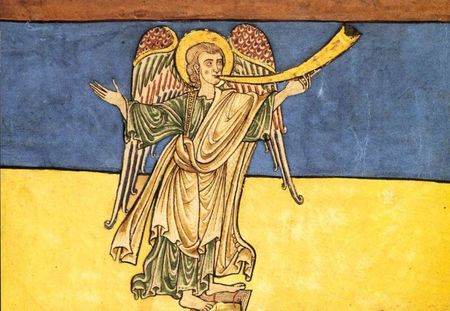
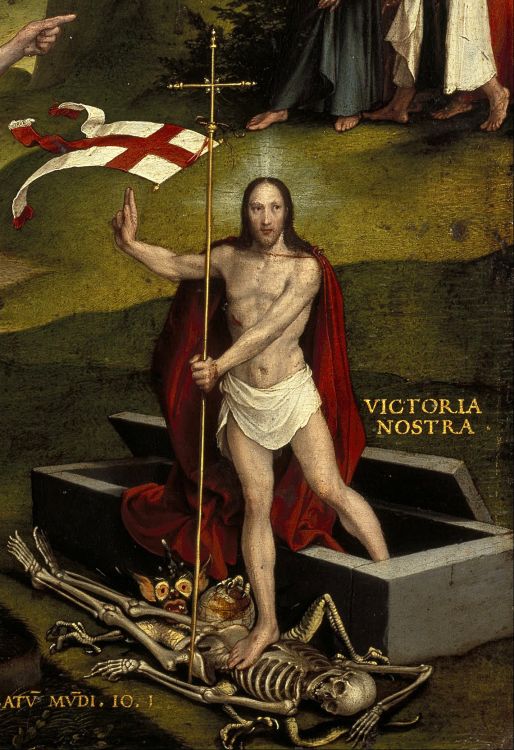
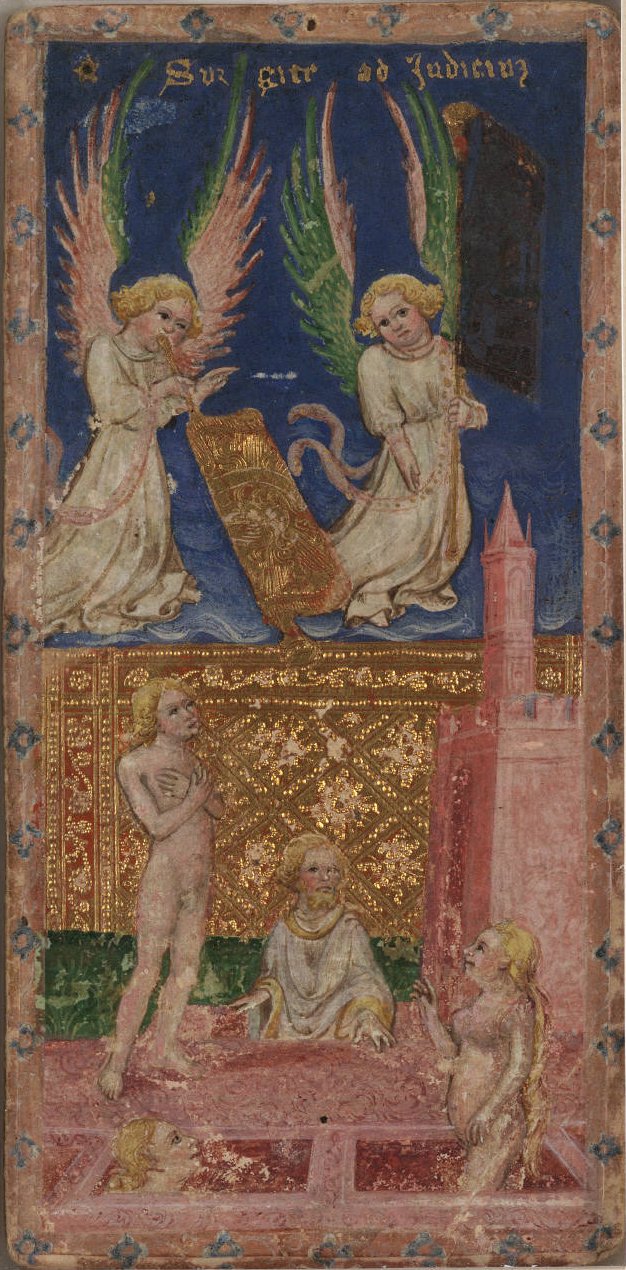
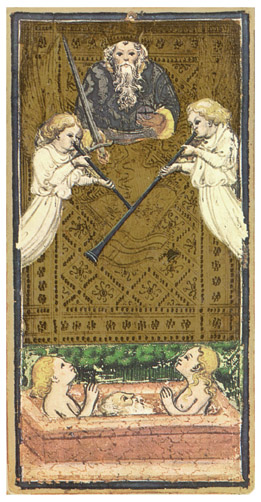
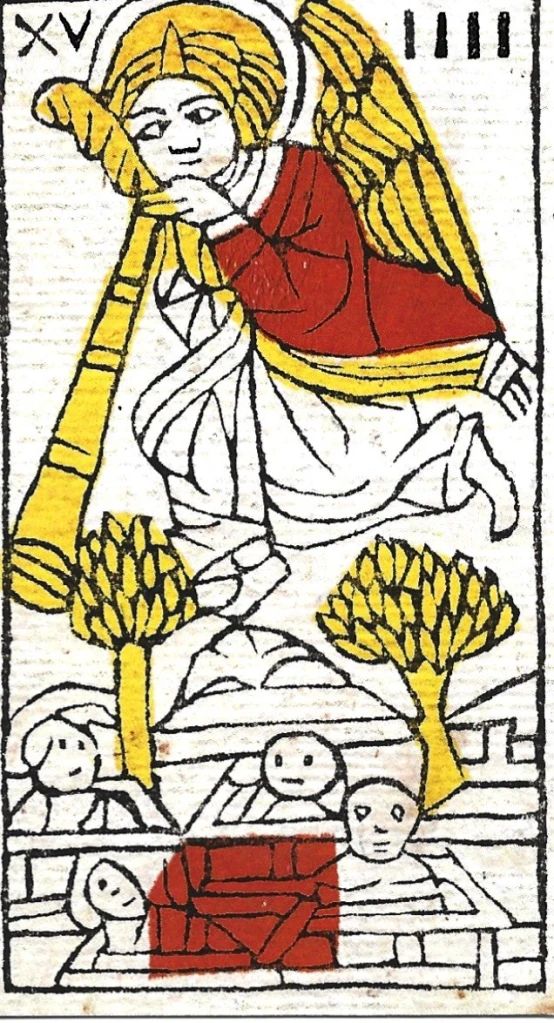
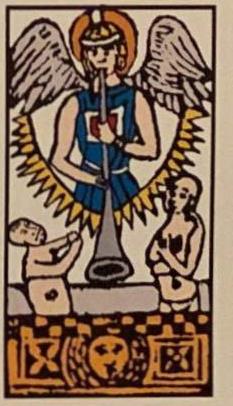
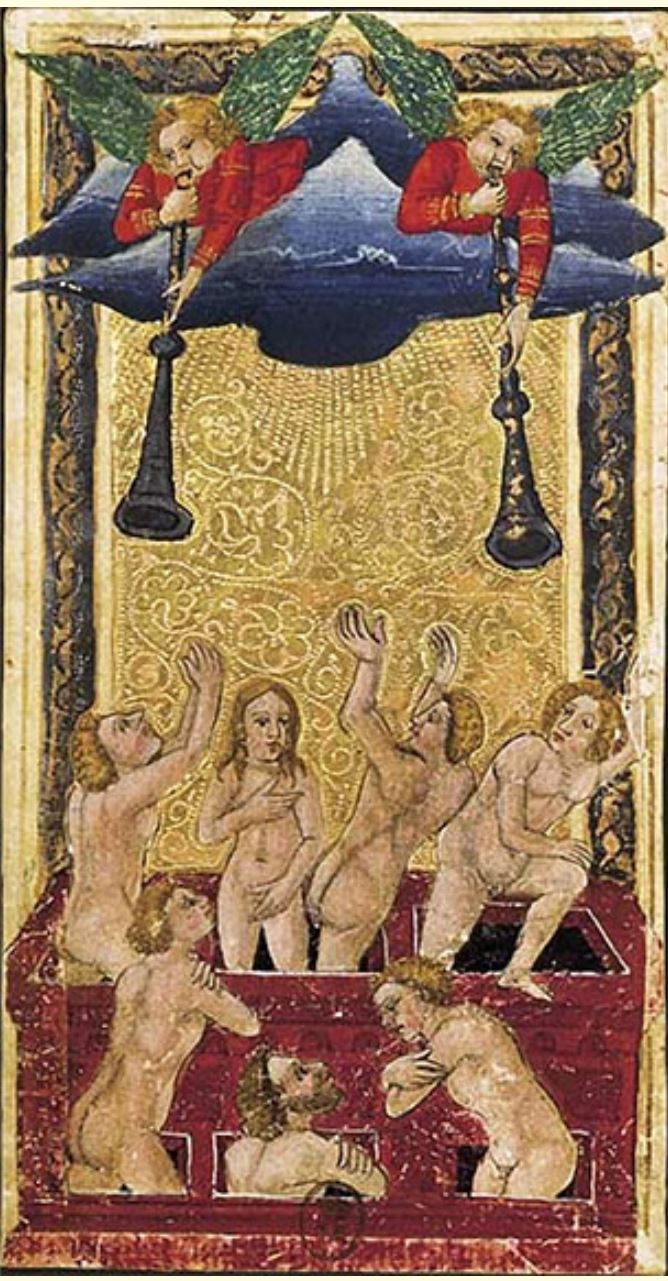
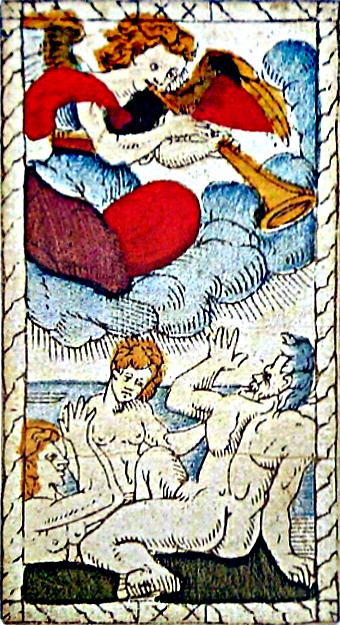

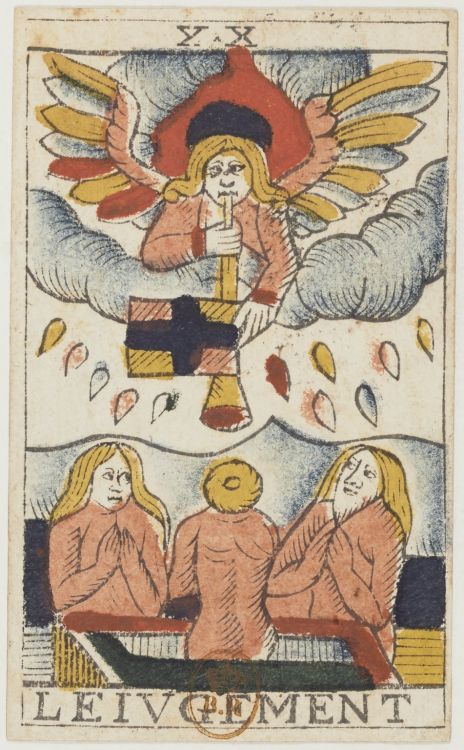
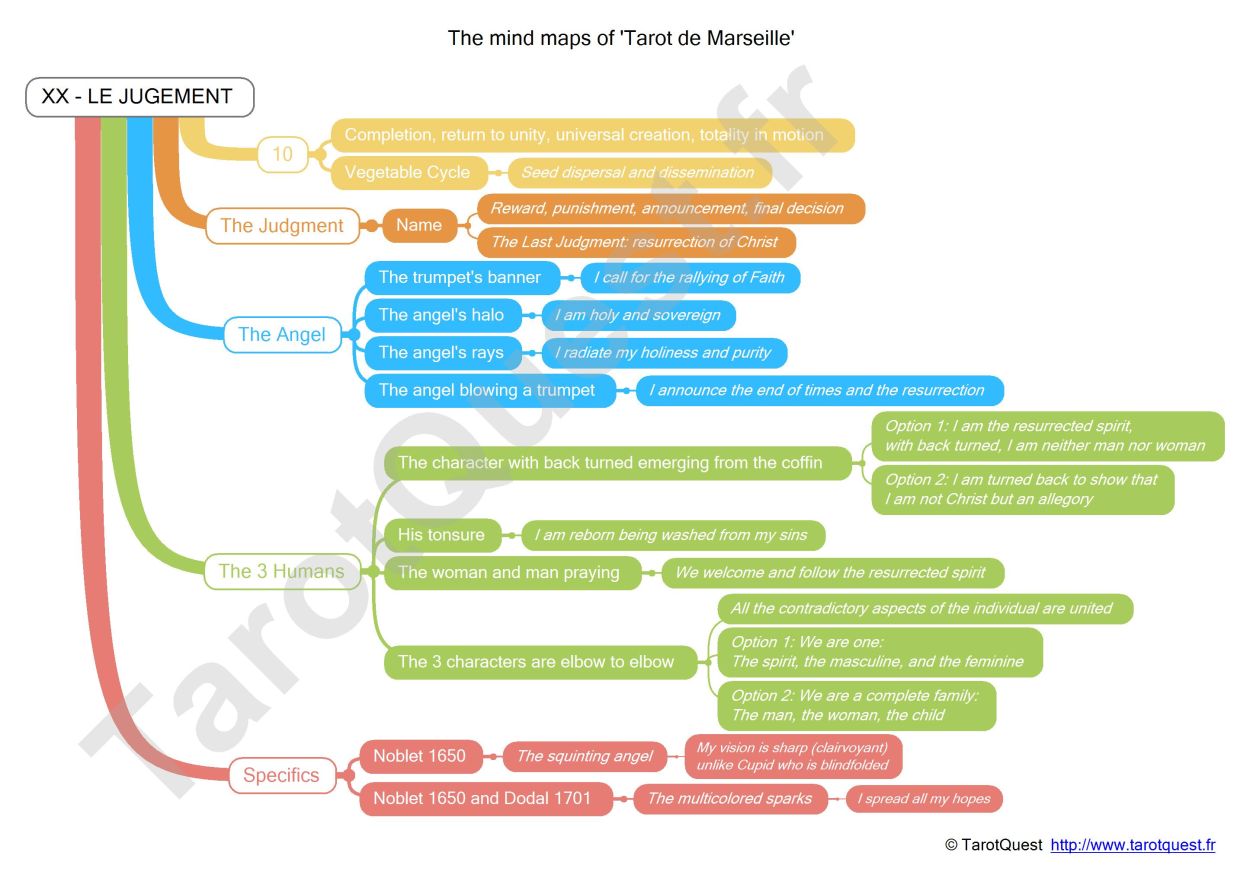
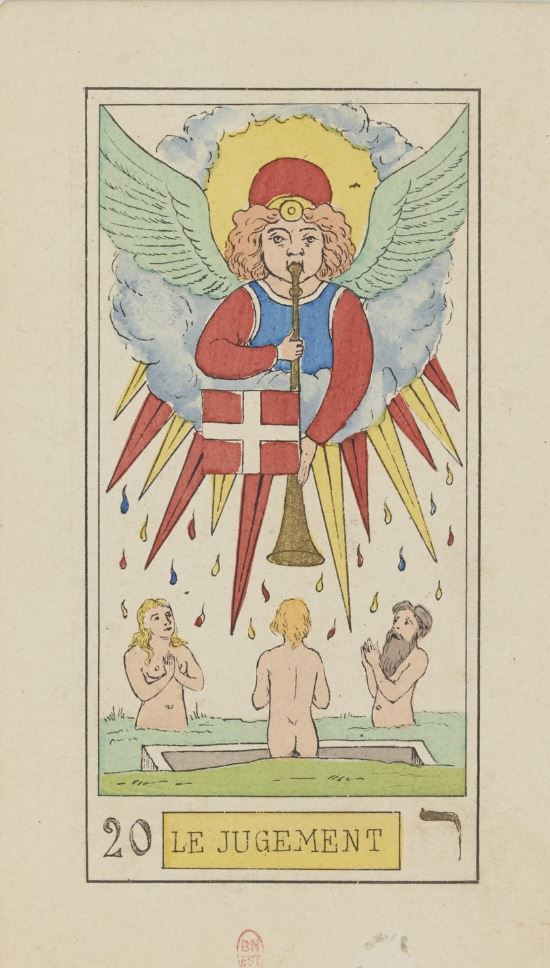
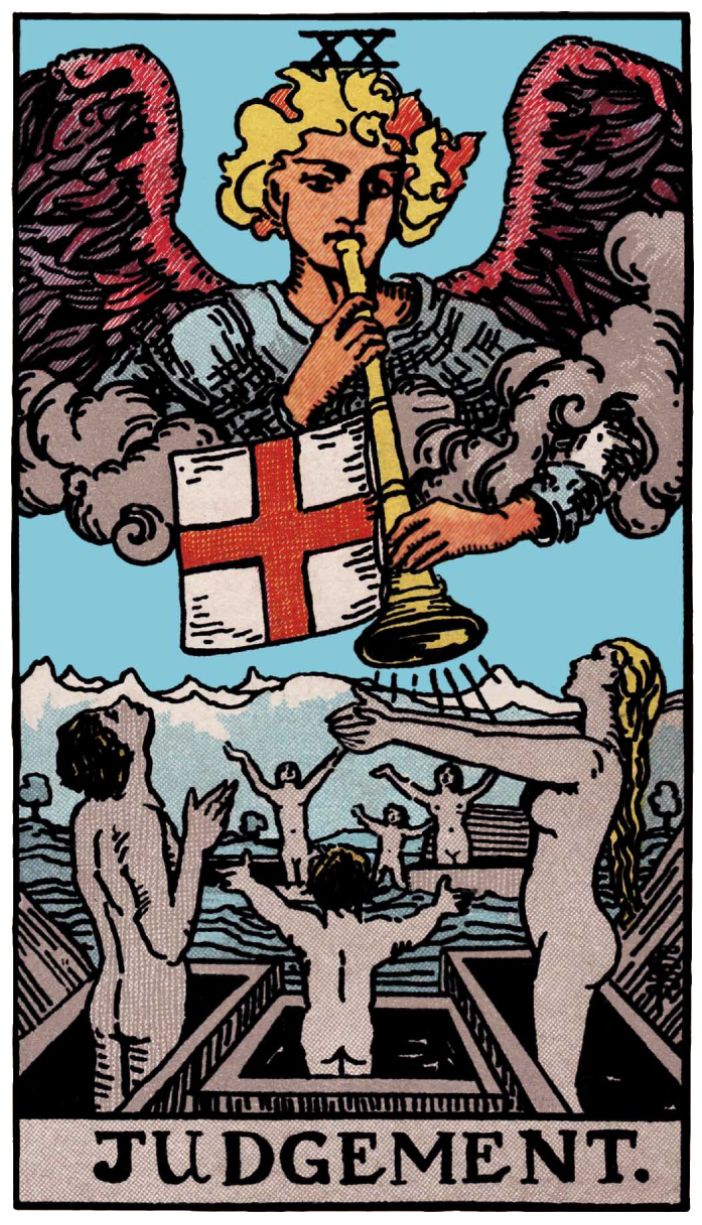
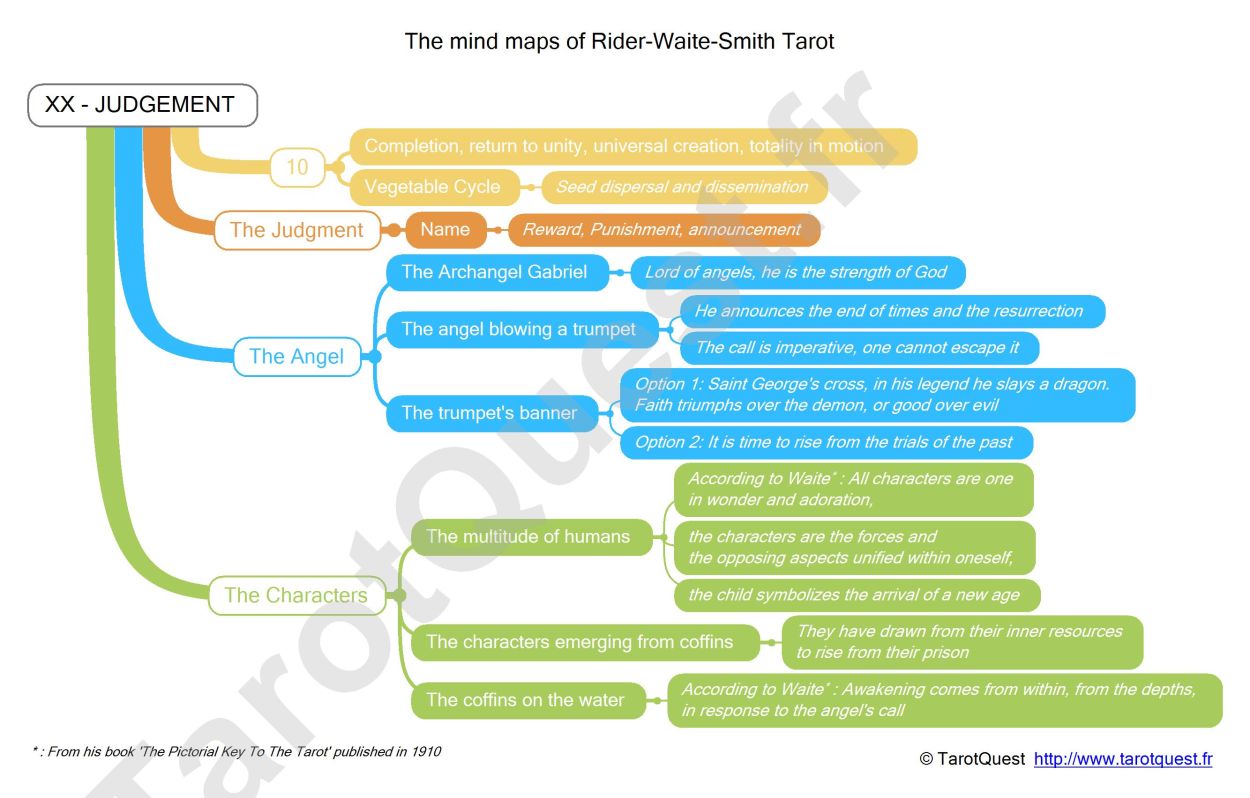
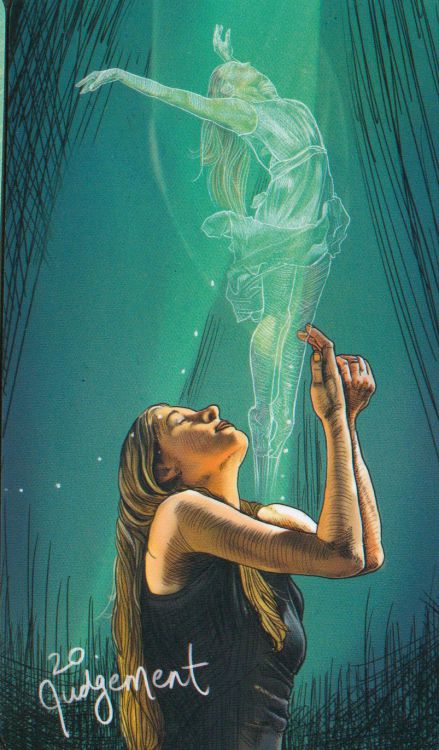
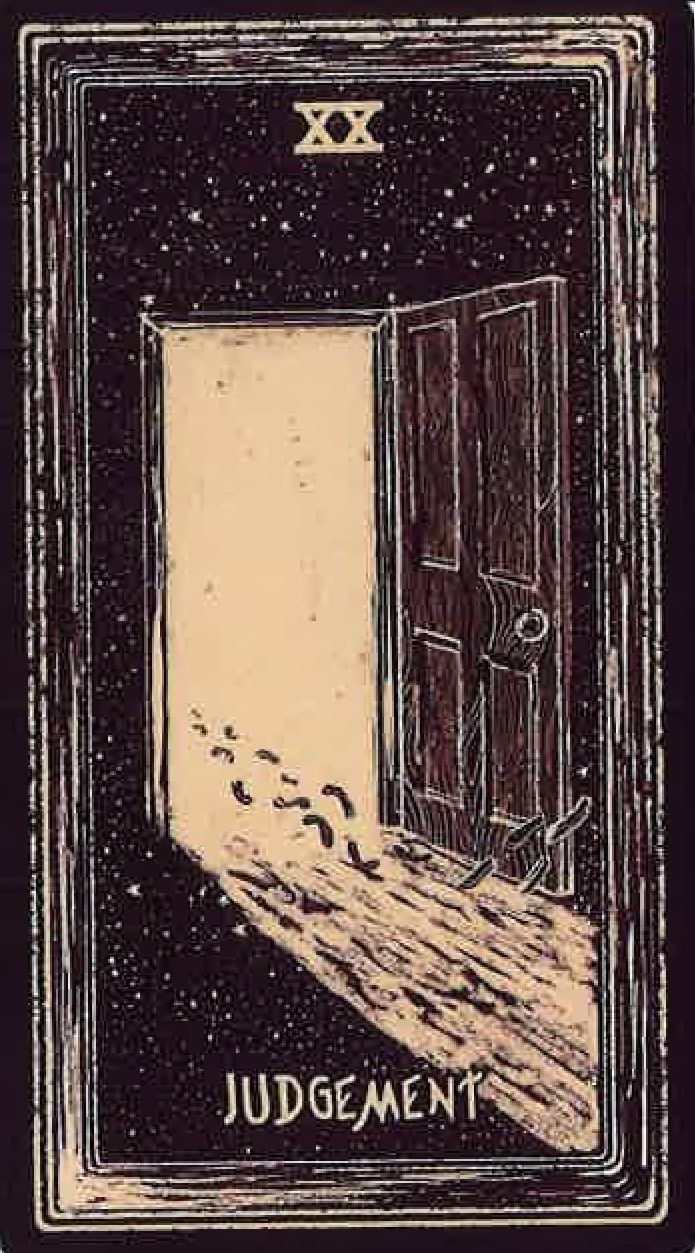
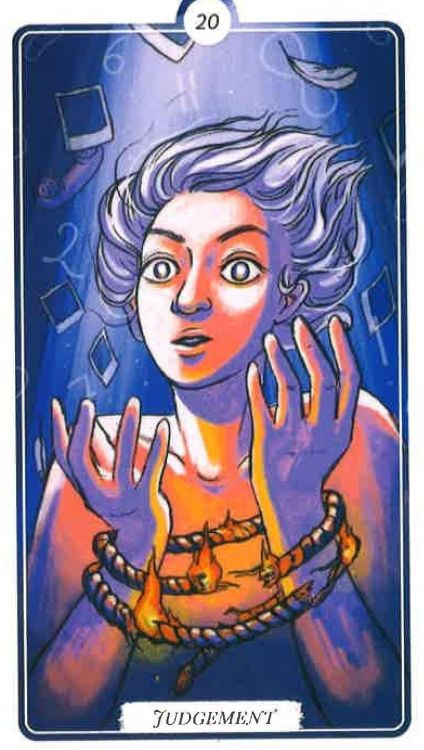
Copyright © TarotQuest.fr